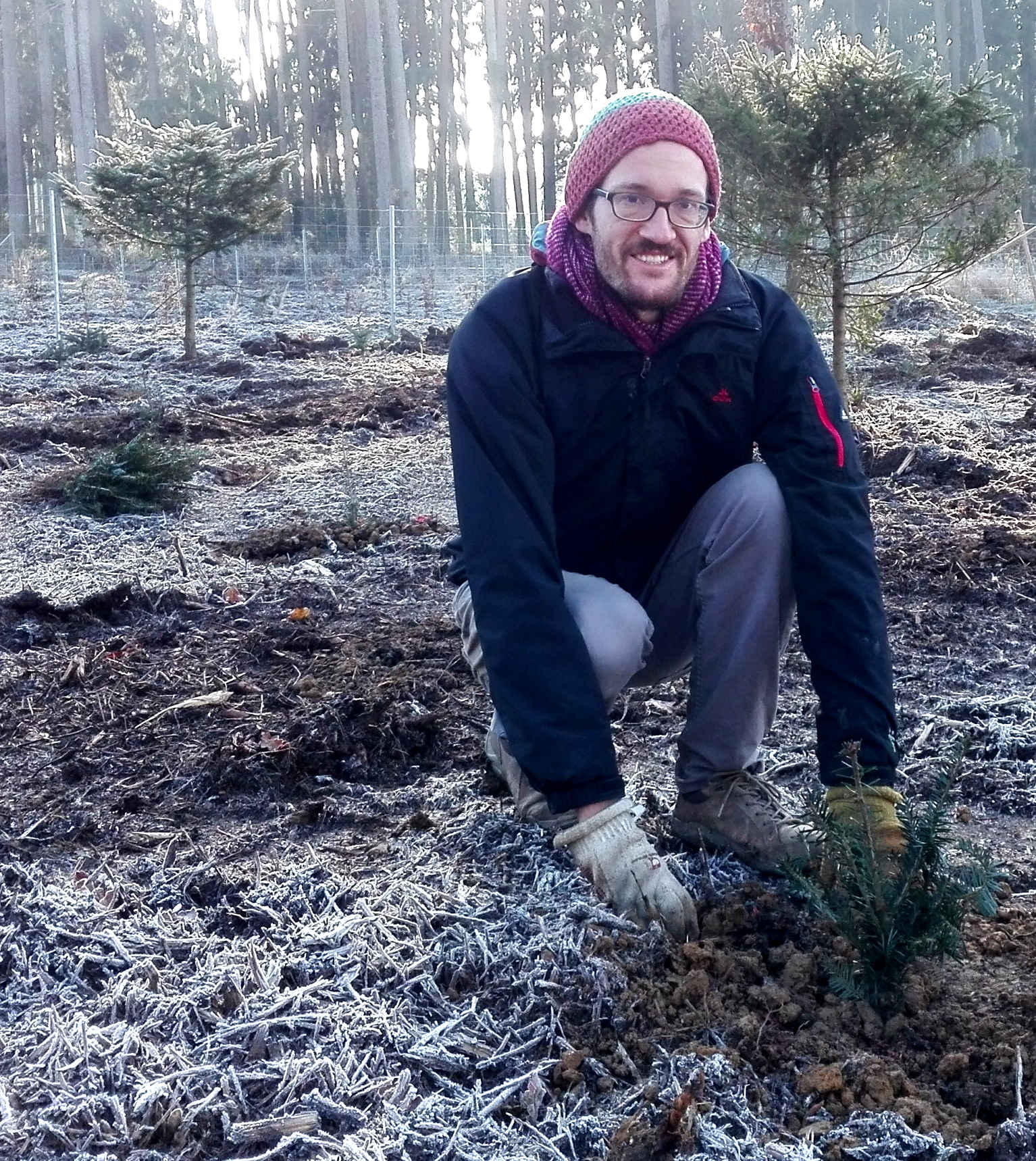between Georg Högl and Holger Slowik (22.04.2022)
translated by Edd Lee (29.09.2022)
The forest has undergone an amazing transformation: from a place of a multitude of dangers, to a preservation area of untouched nature. It serves as a seismograph for the general state of the environment. But what role does the forest play in music? Do hunting horns and birdsong really emanate from the forest? Holger Slowik from the #StrettaJournal spoke to musicologist Georg Högl, an expert on the forest in music.

Holger Slowik: When I think of the forest in connection with sounds and music, I immediately associate: rustling leaves and birdsong, the sound of the hunting horn, and the tones of a male voice choir. Am I a hopeless romantic?
Georg Högl: There is this romantic notion of the artist who, with paper and pen, takes repose in a comfortable spot in the forest in order to take down what “nature” yields up to him directly, “objectively”, and in its purest of forms. In fact, our perception of the environment is always subject to a variety of influences, it is overlaid by subjective memories, our current mood and cultural imprints - such as our musical experience and horizon. And that's why such clichés of "forest impressions", such as stylised horn calls, or the imitation of birdsong and whispering winds, play an important role. Because even if we, as musicians, consciously try to detach ourselves from it, that in itself, is exactly a form of influence. Incidentally, this cultural imprint on our perception of nature can already be demonstrated very well in the term "birdsong": From a biological point of view, the vocalisations of birds have very little to do with singing, and yet we unconsciously compare them with our musical experience and standards, and believe we can hear scales or chords, or funny or plaintive melodies.
HS: Is it possible to say when the forest started becoming a theme in music?
GH:Looking back through music history, certain strands of tradition in musical forest depictions can be traced back a long way. For example, echo imitations were already used in 16th century madrigals after all, Echo was historically the name of a forest nymph. Thanks to romantic literature, especially the novels and poems of Ludwig Tieck and Joseph von Eichendorff, the french horn, known in Germany as Waldhorn (Forest horn) at the time, in particular, became very important for depicting forests in the 19th century. This is a very interesting historical development, because in its original use, in hunting, in which the horn provided the hunting call in the forest, after a certain point, it began to be phased out. The sound of the horn is now considered to be particularly soulful and "close to nature". It expresses the longing for distance, and the forest, together, idyllic "forest solitude", in which one can leave the everyday world far behind, and temporarily lose oneself.
We use YouTube to embed video content. This Google service has its own cookies and may collect data about your activity. You can find more information in the data protection declaration of the provider. We need your consent to display YouTube videos:
Show YouTube contentHS: The beginning of Bruckner's 4th Symphony, the ‘Romantic’, is a good example of this: the famous horn solo over a "foundation" of the softly trembling strings. This is pure nature! Also because the melody only gradually breaks away from the basic triad tones. According to an unknown source, Bruckner himself explained this opening as a romantic morning scene in a mediaeval town, with the horn "signalling the new day from the town hall". That seems to me to be a much too "civilised" explanation for this otherworldly music, which slowly yet surely defines space and time.
GH: In general, it could be said that in the many attempts to make "nature" comprehensible in a composition, certain musical laws such as metre or harmonic progression are often deliberately undermined; precisely so that nature can be experienced as something else – as something that, to a certain extent, stands outside the rules of art. And precisely for this reason, it is hard to draw up a fixed catalogue of exemplary, musically recognisable “forest settings”. The forest itself is also far too ambivalent a landscape, which can evoke very different, even contradictory, moods depending on the context.
HS: "As you call into the forest, so it echoes."
GH: Yes, exactly! And that is also confirmed by looking at its artistic presentation. When we look at forest scenes in opera, the environment often serves as a kind of “mirror to the soul”: depending on the protagonist’s inner, emotional state, the forest that surrounds him appears and sounds completely different – for example at first strange, repulsive and sinister, but then familiar, harmonious and protective. The aria "Sombre forêt" from Gioachino Rossini's Opera Guillaume Tell is an example of this: the character enters into a dialogue with the forest, and the dangerous wilderness becomes a comforting refuge, precisely because it is so far from civilization and its conventions. In such cases, it is no longer possible to decide exactly to what the music is referring: does the mysterious tremolo of the timpani imitate a sound of the forest, or is it rather an expression of the inner restlessness of the protagonist? Or perhaps even both at the same time, where people and the environment have reached a harmonious accord.
We use YouTube to embed video content. This Google service has its own cookies and may collect data about your activity. You can find more information in the data protection declaration of the provider. We need your consent to display YouTube videos:
Show YouTube contentHS: The dangerous wilderness, the "Forest", becomes a comforting refuge. I had never realised before reading your book: it was only in the 19th century that the forest was transformed from a world of danger, to a place of repose, transformed in fairy tales, romantic poems and stories and to an ideal world of creation and peaceful coexistence.
GH: The use of the forest and its appearance underwent major changes in many parts of Europe during the 18th and 19th centuries, and as a result, people's attitudes towards the forest were also subject to change. By the way: The idea that the German lands “back then”, when the Brothers Grimm collected their forest fairy tales, Eichendorff wrote his famous poems and Carl Maria von Weber composed Der Freischütz , was much more forested than today is a tempting illusion – the degree of forest cover is even higher today.
HS: Were there certain developments or special events that made the forest particularly attractive for artistic exploration?
GH: In general, it is often the case that certain circumstances and themes move into public and artistic focus when they are no longer taken for granted, when changes emerge that trigger fears and concerns. In the artistic examination of the forest, one repeatedly encounters the motivation to want to capture something with the help of art, literature or music, that is lost in reality: a specific landscape, an ephemeral impression of nature, or a memory of a time gone by. The forest experienced such "booms", for example, towards the end of the 18th century, when warnings were given in many places of an imminent "wood shortage", or of course through the "deforestation" debate of the 1980s. The forest is currently attracting more attention due to the effects of climate change.
HS: The occupation of the Hambach Forest, whose clearing for lignite mining has now been stopped, or the Dannenröder Forest, which partly has to give way for a new motorway, recently showed the symbolic power of the forest and the fear of its imminent loss, the tension between "nature" and "civilization".
GH: And so one could also interpret the intensive examination of the forest in literature, art and music of the 19th century as a phenomenon of such a transformation. On the one hand, in the course of urbanisation and industrialisation, many people lost their everyday, practical and often mundane connection to the forest. This made idealisation possible, because for city dwellers the forest was primarily a local recreation area for walking. A place that no longer had anything to do with effort and work, but only with "weekends and sunshine" - and which was increasingly being designed for these leisure needs. Hiking trails have been levelled, beautiful views and clearings created, all potentially dangerous wildlife eradicated, and swamps drained.
HS: Nature is directed to make it easier to experience nature?
GH: In the same way that it was only possible to enjoy a thunderstorm as a sublime natural spectacle after the invention of the lightning conductor, the undiluted "joy of the forest" could only arise when it was possible to be there under controlled and safe conditions. And on the other hand, rational forestry was established at the beginning of the 19th century, and within a few decades, it radically redesigned German forests: In order to satisfy the enormous demand for construction and firewood, the main focus was on the cultivation of the fast-growing spruce, and forest grazing by farm animals was abolished almost everywhere. This clear, perceptible transformation of the landscape awakened a broader awareness that the beauty and diversity of old trees and forests was something worth protecting. This is where the first roots of environmental protection movements lie, although, interestingly enough, the "cultural" importance of the forest was often referred to at the time: the German forest "produced" so many beautiful poems and songs, and for that reason alone it must be preserved. Well-known pieces of music such as Robert Schumann's Piano Cycle Waldszenen op. 82 and „Waldweben“ from Richard Wagner's Siegfried became sound arguments for forest preservation.
We use YouTube to embed video content. This Google service has its own cookies and may collect data about your activity. You can find more information in the data protection declaration of the provider. We need your consent to display YouTube videos:
Show YouTube contentHS: Can the passionate outdoorsman Georg Högl still go into the forest at ease - or does your research, the entire cultural history of the forest, Freischütz, Siegfried and Robert Schumann always resonate within you?
GH: Since my family owns a small piece of forest, I like to help plant and tend the trees there. You move off the beaten path, stay in one spot for a long time and develop a very practical view of a manageable section of nature, very different from hiking, for example. So very different points of view always interact when I enter the forest. And of course, as a result of my studies, I have now become much more sensitive to the sounds of the forest. When a gust of wind blows through the treetops and the muffled sound grows louder, it inevitably brings to mind the romantic 'forest murmur'. – And who remains completely at ease when they go into the forest?

Georg Ewald Högl was born in Landshut in 1988 and attended the Regensburger Domspatzen music school. After providing service in the community, he studied musicology and music education at the Catholic University of Eichstätt-Ingolstadt, at the Julius Maximilian University of Würzburg, and at the Università degli Studi di Pavia in Cremona.
Musically, he is mainly active as a choral singer and director. Since February 2015, he has been a research associate for the "Richard Wagner Writings" project at the Würzburg Institute for Music Research. In 2021 he received his doctorate for his work on Wald - Weber - Wagner, studies on the theme of the forest in published music of the 19th century.
